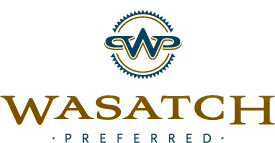The size of jury awards has been exploding in the last few years, and they are often exceeding the limits that businesses have on their liability policies.
These excessively large awards are known as “nuclear” verdicts, which are defined as those with damages of $10 million or more. In 2023, such verdicts totaled $14.5 billion, according to one analysis.
In 2020, half of them were greater than $21 million; that number jumped to $44 million last year. There were 89 nuclear verdicts in 2023, and 27 of them were for more than $100 million.
This is happening at the same time that corporations in general are purchasing smaller amounts of liability insurance, according to a report by major insurer Chubb.
The median limits of insurance purchased have shrunk over the last ten years. They are 44% less today in the construction industry than they were in 2014, 31% less in health care and 28% lower in consumer products.
This has created a large and growing gap between the amounts of insurance corporations are buying to protect themselves and the jury verdicts they may face. When a jury award surpasses a policy’s limit, the insured has to cover the rest out of pocket.
Some examples of recent nuclear verdicts:
- In Georgia, a truck veered into oncoming traffic, causing a driver to swerve out of its way and strike a man exiting his truck in the emergency lane. A jury ordered the trucking company to pay $47 million to the man’s family.
- In Seattle, a jury awarded a former ultramarathon runner $13.1 million in damages for a crippling injury she suffered when she fell on a sidewalk.
What’s driving nuclear verdicts
Analysts have pointed to several reasons for the increase in these verdicts. People today are pessimistic, they have lost trust in corporations, they have become desensitized to large numbers, and they are more pro-plaintiff, according to these explanations.
However, another major factor is how these suits are financed. Lawsuits have become an investment vehicle for hedge funds and other large investors through a concept known as “third party litigation funding.”
In a TPLF arrangement, investors fund plaintiffs or law firms for the costs of these lawsuits. The benefit they receive is contingent on the suit’s outcome. If the plaintiff wins, the investors receive a share of the awarded damages. If the plaintiff loses, they get nothing.
Given that they invested $15.2 billion in TPLF arrangements in the U.S. in 2023, they appear to be optimistic about their chances.
TPLF provides financial incentives to file frivolous lawsuits because defendants may choose to settle cases rather than go to trial. The investors also get a say in whether or when to settle a suit. They may push for a trial in the hope of a nuclear verdict.
Because TPLF increases liability insurance premiums, out-of-pocket damage payments, or both, it increases corporations’ costs.
The takeaway
Liability insurance rates have been rising as a result of these nuclear verdicts, which you have probably noticed on your last premium bill. However, the worst thing you can do is reduce your limits, particularly in light of increasing jury awards.
And it’s not just nuclear awards that have become a problem. Awards are increasing for small cases, as well.
